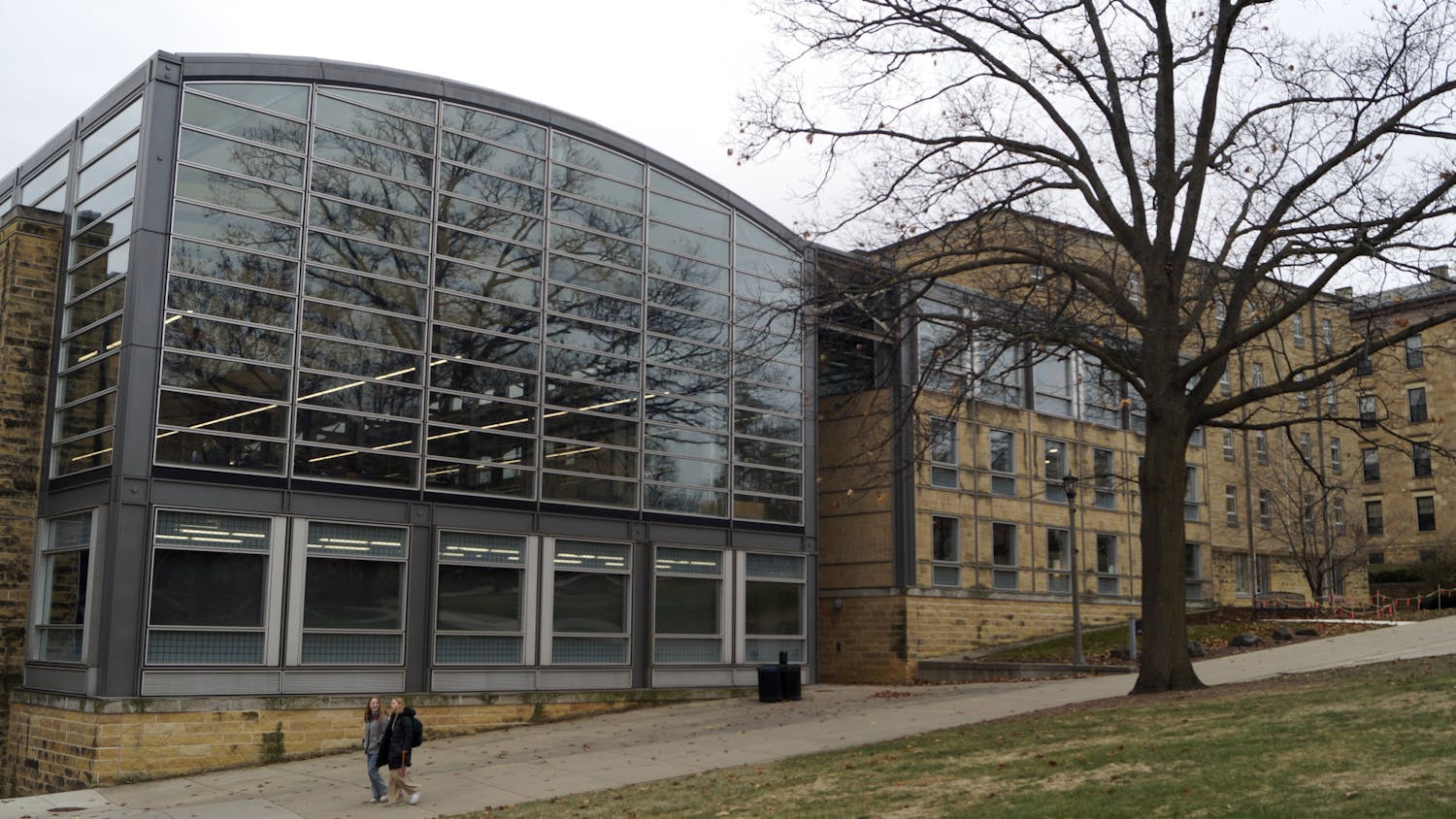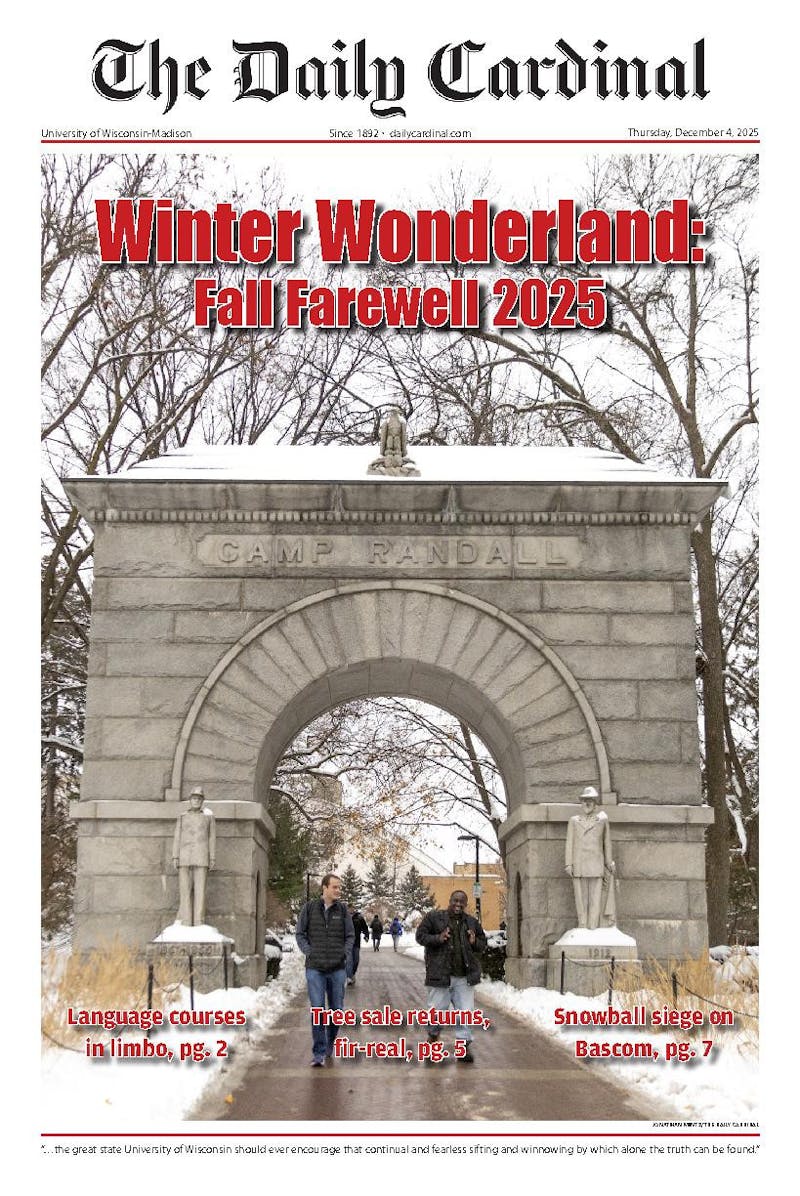The lights were dim, the music was pounding and the models were barely clothed. One after another, pairs of models sauntered down the rickety pink tulle-edge runway, stopped at the end, ignored the hands that attempted to grab them, pouted and scampered off the stage.
All it took for some models to strip down to their ribbon-festooned skivvies was a little bit of bubbly, plenty of self confidence and the idea of fundraising. The event was put on by the Textile and Apparel Students Association as a way to raise money for their major annual event—another, larger fashion show in May.
I'm going to tell you a little secret: Last time we did this we were drunk,\ a skinny blond in a bra overrun by a large black bow shouted over the din, and slammed down money on the bar in Madison Avenue. ""There's no way we could've done this without the champagne before. Ladies, we need shots!""
More models streamed off the runway.
""Walking down that runway in your underwear, man that's nothing when you have a hot piece next to you,"" a male model said, smiling with confidence. He was perfectly toned, and was sporting skin-tight boxer briefs, after all. He wrapped his arm around his escort's waist. She giggled and they scampered toward the dressing room—presumably to find more clothes.
Despite a steady snowfall and a line snaking around the corner outside, Madison Avenue was packed on this chilly February night fundraiser for Haute Hommes and Femme Fatales. Each member of TASA had embellished two sets of underwear, adding ribbons, lace, beading and tulle to bras and panties. The event raised more than $2,000 for the group's May fashion show.
That show is more formal and a much bigger event, according to fashion student and UW-Madison junior Rachel Covert. Hosted in the Memorial Union's Great Hall, there is a DJ, professional hair and makeup stylists, lighting and a professional photographer, and it features designs from all students in the Textile and Apparel Design program.
""It's just like the fashion shows you see on TV—the whole nine yards,"" Covert said. ""We only show designs which we made for an ETD class. These designs are meticulously crafted and planned out. For our fundraiser show and the UW vintage show, we just put things together however we wanted, so there was a variety in quality and style. The spring show has only our favorite designs that are constructed for long-term wearablity.""
Depending on her year in the program—there are no male students currently in the program—a student designs anywhere from one to eight projects, with each project containing between one and 12 looks. Sewing is labor-intensive, so students in their second year will choose only one original look for the show, third year students will showcase two or more original looks and first-year students will showcase kimonos, made from a commercial pattern but hand-embellished to emote a specific concept.
""To someone who isn't in this major, it may seem like a big deal,"" UW-Madison freshman Brittany Kucera said, referencing the amount of time that goes into each project. ""But there is so much heart and passion in everything you do ... that beading for 30 hours or sewing for 40 is just an accepted fact. You want it to look good and you will give it whatever it takes.""
Kucera is one of several coordinators for the fashion show. She is in charge of the first-year students and, despite her self-proclaimed title of ""sidekick,"" must work closely with the other students to coordinate music, models, location and lights. Each student brings an important aspect to the planning process, she said, because each can offer feedback on how she responds to each facet of the show.
Although a freshman, Kucera has already had several of her pieces exhibited on the runway. She made her Madison fashion debut in February, designing a plunging red set trimmed with rhinestones and accented with heart-patterend ribbon.
""I ran out into the audience to see my piece and it was so exciting,"" she said. ""I was so proud, as dorky and predictable as that seems. It is this feeling of
accomplishment after spending so much time working on it, to see it on a model down a runway and then to hear the audience cheer because they liked it, or even because they just liked the model in her underwear—it's great.""
Back at Madison Avenue, the fashion show had been going on for more than 30 minutes, and by now the bar was crowded with girls in ribbon-trimmed boy shorts, red brocade bustiers and conical, Madonna-in-the-mid ‘80s style bras. Shot after shot was clinked and gulped in celebration.
All of a sudden, the music changed, the models rushed the runway and began an impromptu, underwear-fueled dance finale.
Landon Lueck, from the Real World: Philadelphia, and whose presence had earlier set Madison Avenue's ablaze with flashbulbs, stood in the corner, carefully watching the stage.
""You know, I helped design some of these pieces,"" he says, smirking. ""Like before, there was this girl in these plain black lycra bike shorts—that's what it looked like. And I told her, ‘This isn't the Tour de France, you gotta wear something sexy.' You know, because I know.""
He paused for a picture and took a sip of his drink.
""You know what's sexy? Boy shorts. But you got to show a little bit of ass. But obviously, I'd prefer girls to wear nothing at all.""
\





